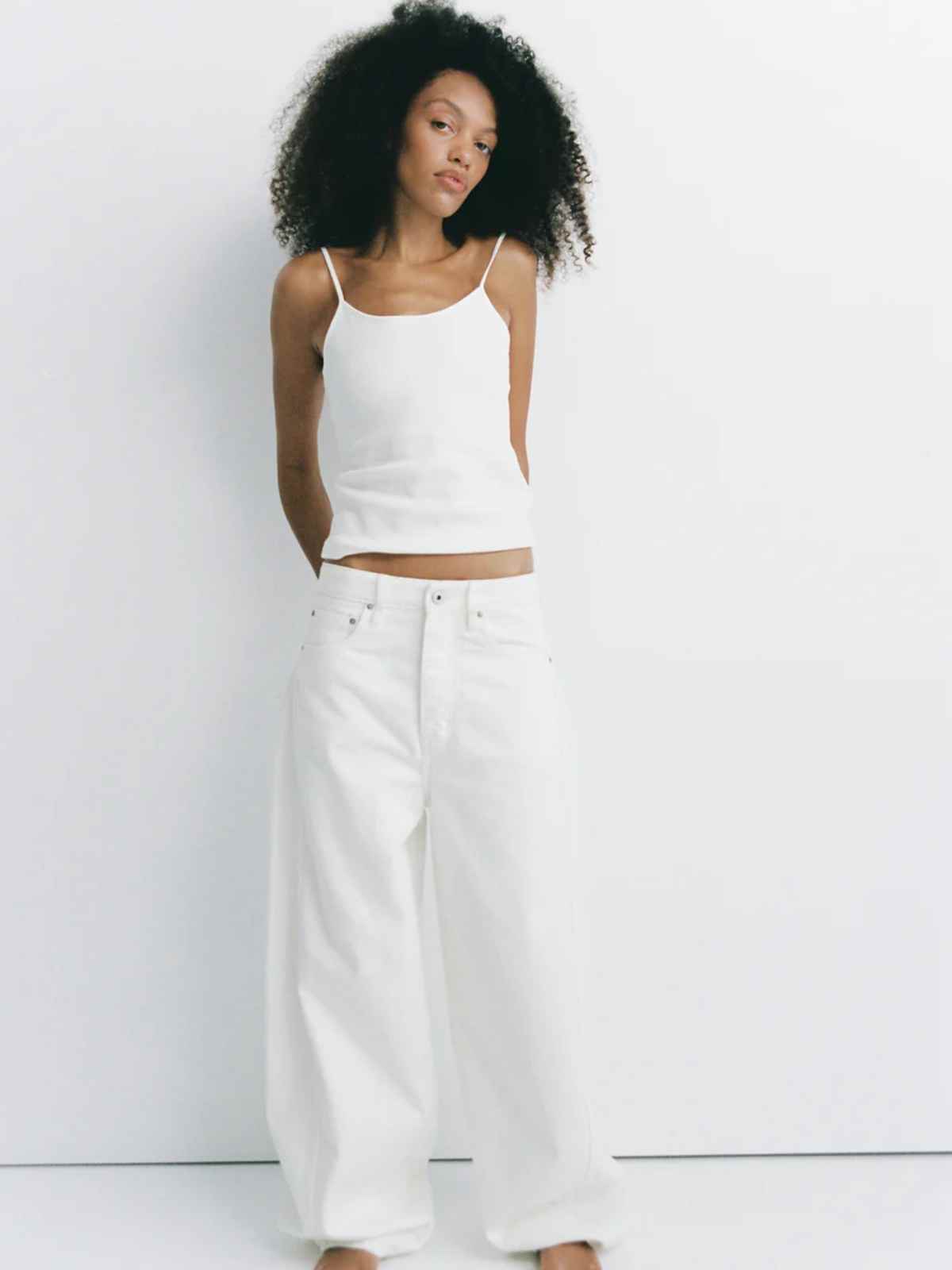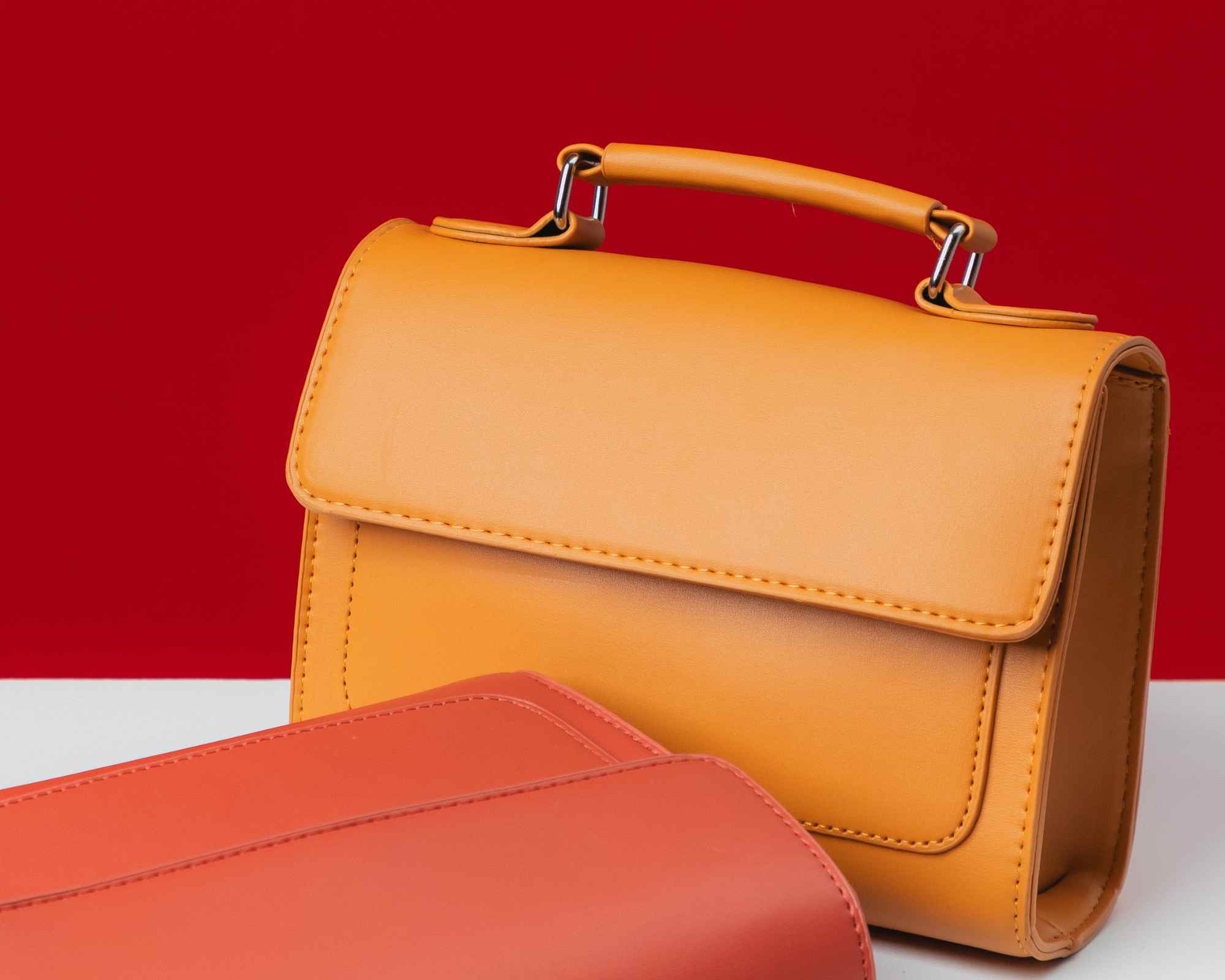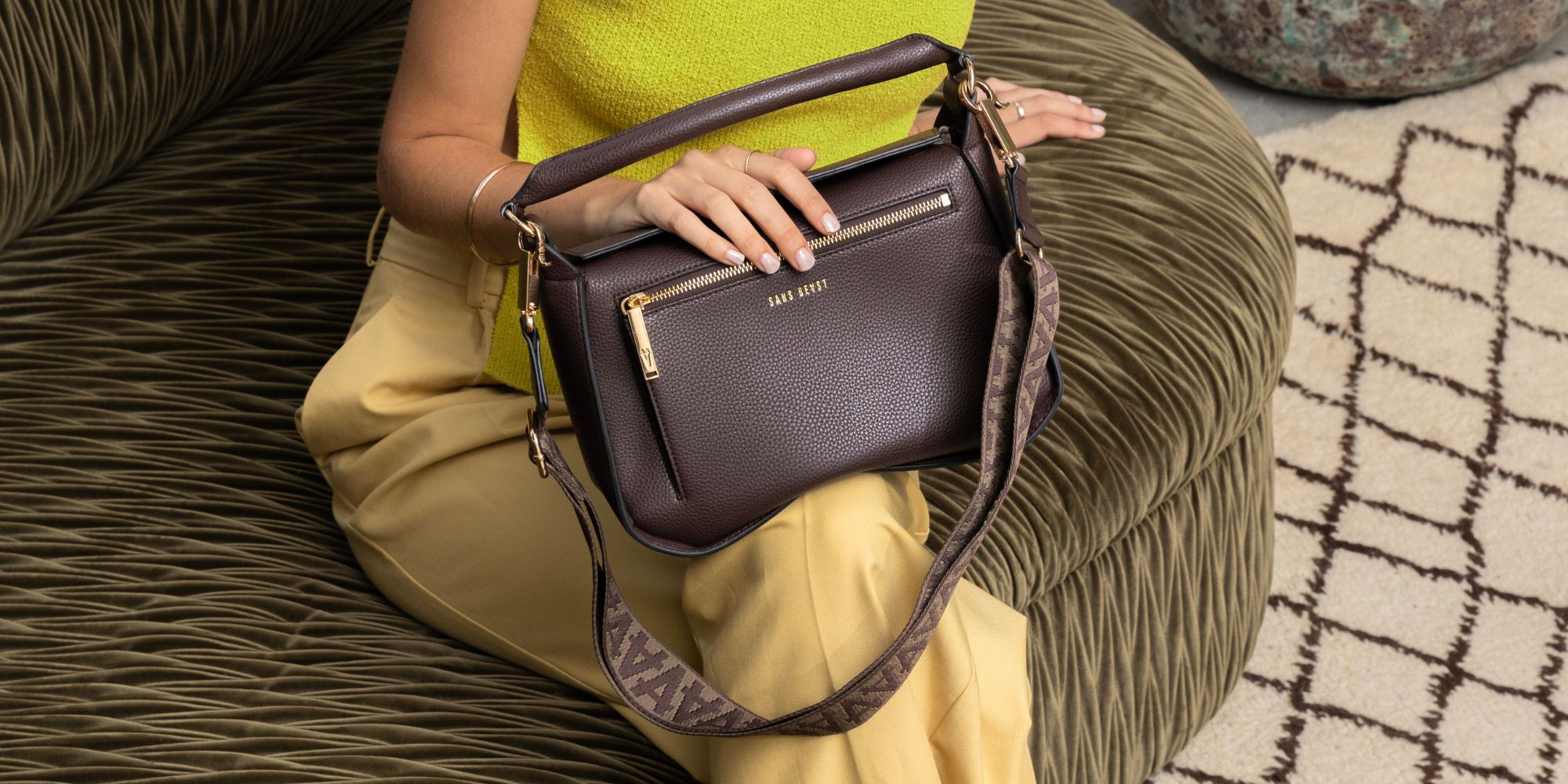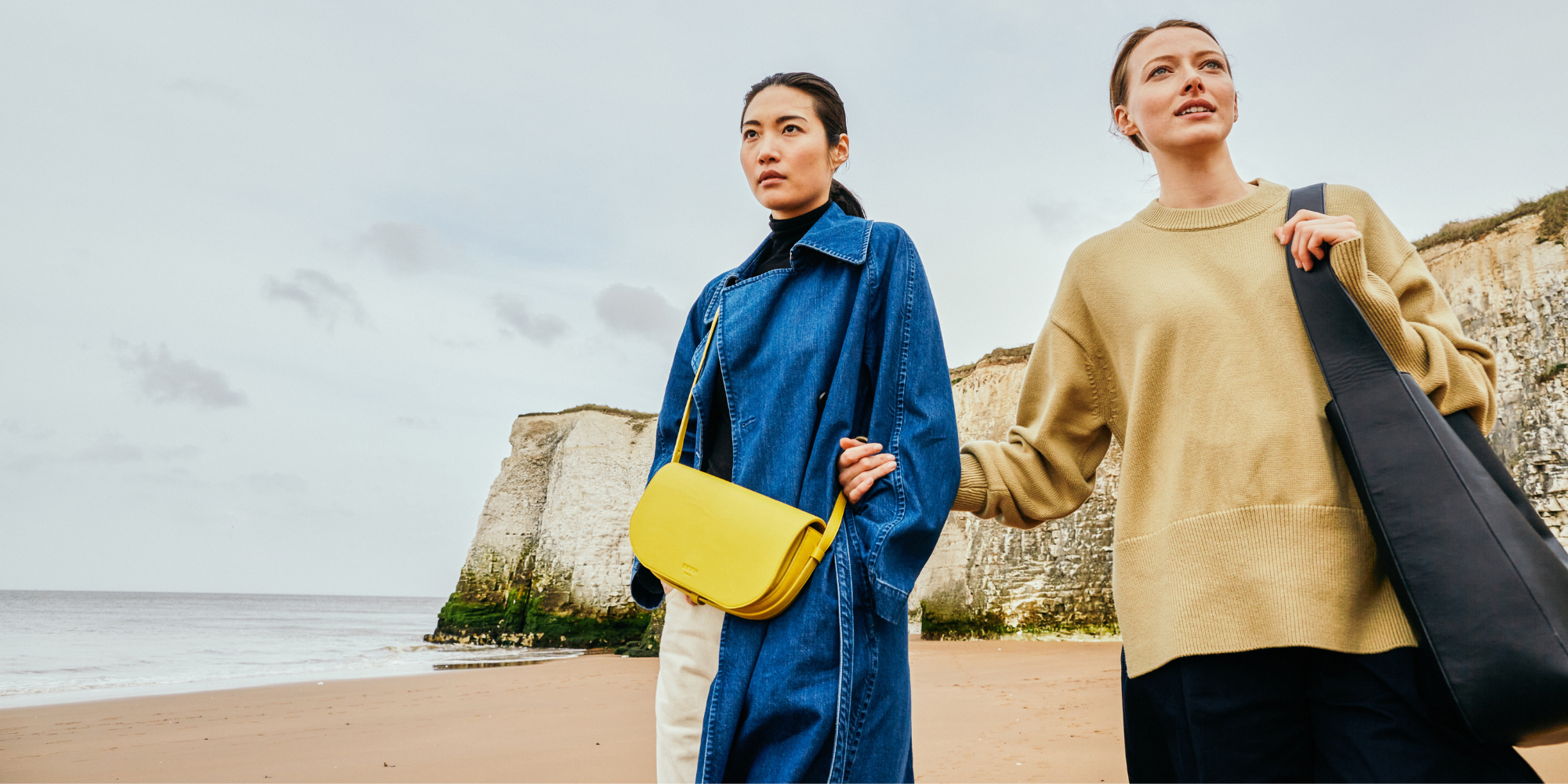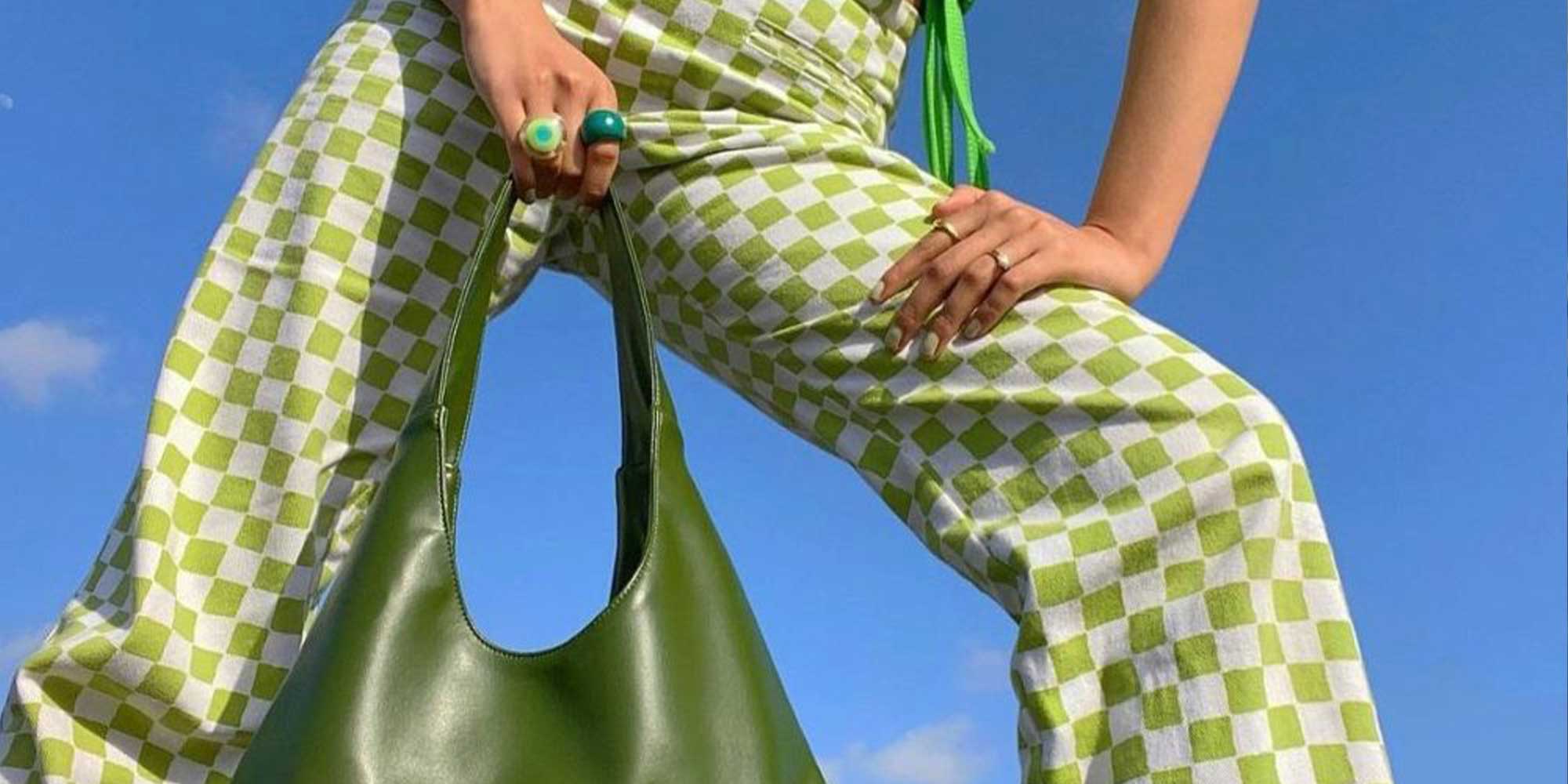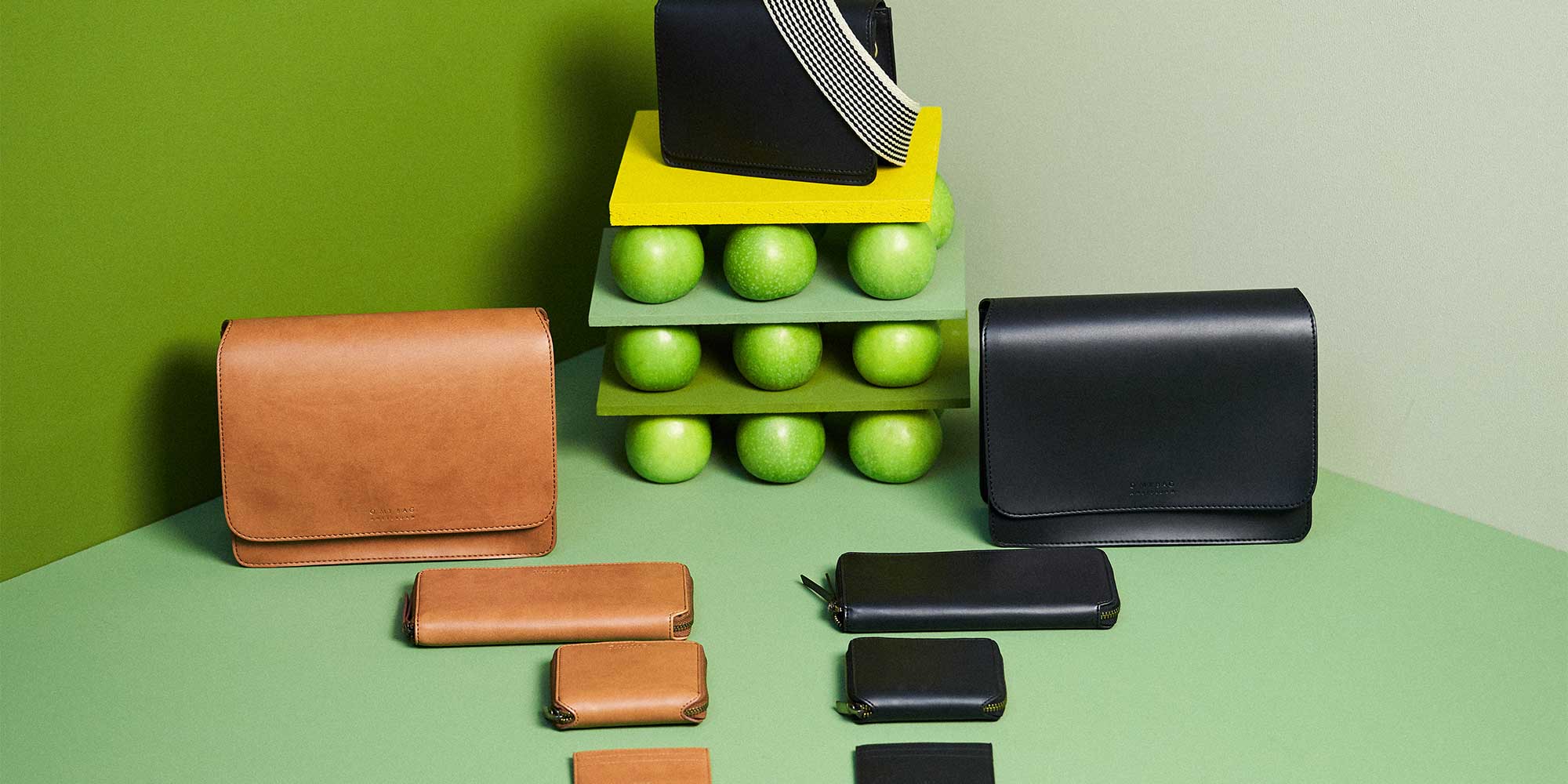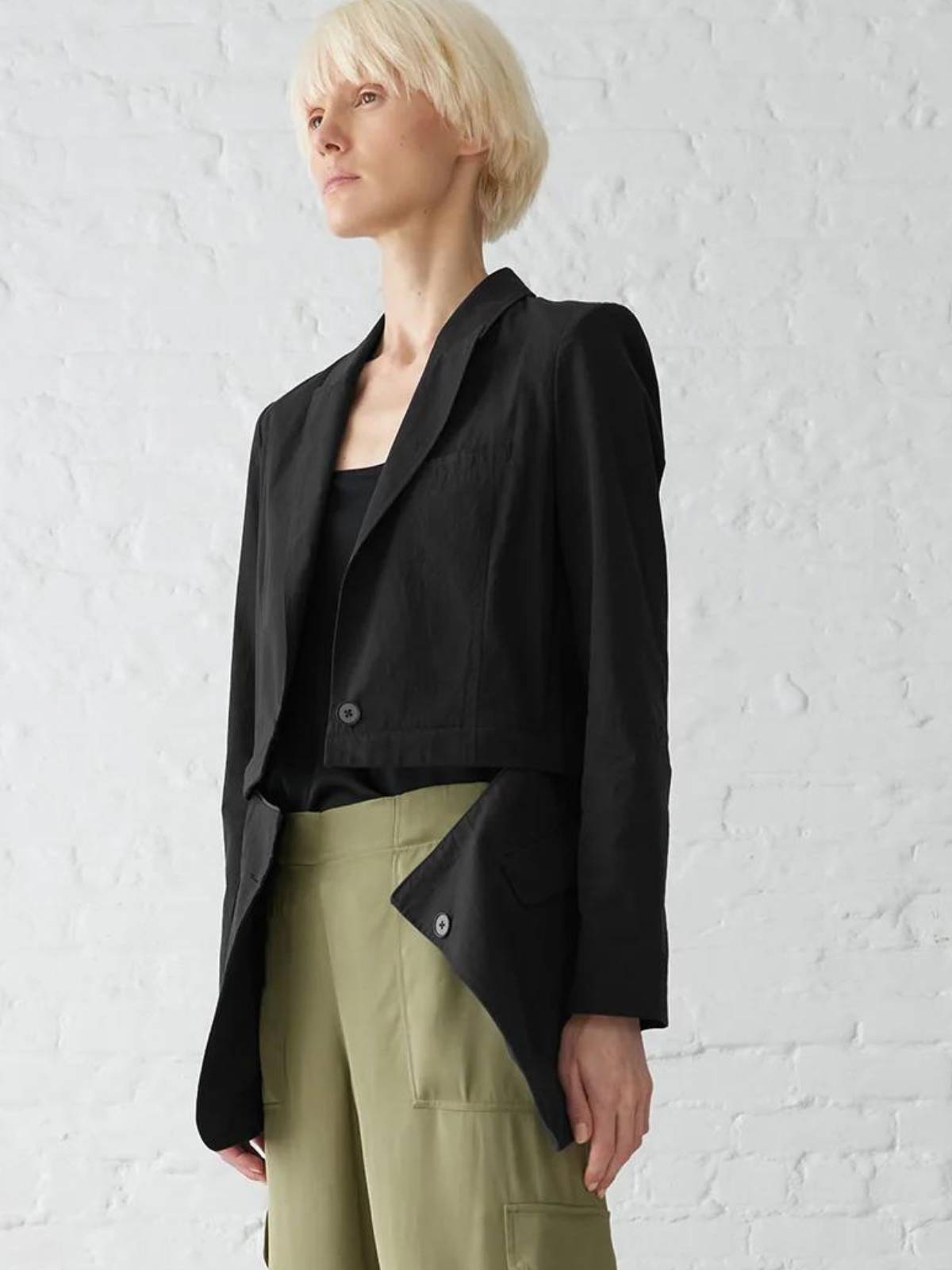Our editors curate highly rated brands that are first assessed by our rigorous ratings system. Buying through our links may earn us a commission—supporting the work we do. Learn more.
Anya Hindmarch has advocated for sustainability in fashion, but how ethical is the brand, really? We dive into its “Not Good Enough” rating and share some better-rated alternatives to consider.
This article is based on the Anya Hindmarch rating published in April 2024 and may not reflect claims the brand has made since then. Our ratings analysts are constantly rerating the thousands of brands you can check on our directory.
Bags of room for improvement
Back in 2007, British handbags and accessories brand Anya Hindmarch convinced some of fashion’s biggest names to ditch single-use plastic bags in favour of reusable canvas totes it had printed with “I’m NOT a plastic bag”. Customers queued for hours to get one at British supermarket Sainsbury’s, where it retailed for £5, and it quickly gained popularity amongst the likes of Lily Cole and Erin O’Connor, even being included in Vanity Fair’s goodie bags for that year’s Academy Awards.
The tote put Anya Hindmarch and its eponymous founder on the map as a leading voice in sustainable fashion. But does that still ring true? How ethical is Anya Hindmarch? In our most recent re-rate, the brand’s score lifted from “We Avoid” to “Not Good Enough”, which shows that while there’s progress being made, the brand still has a way to go before its practices can be considered “Good” or “Great”.
Read on to discover how (and why) the London-based brand rates for its environmental, labour rights, and animal welfare impact.
Environmental impact
Anya Hindmarch’s environmental impact rating raised from “Not Good Enough” to “It’s a Start” in our April 2024 re-rate. That’s promising, as is the fact that the brand now offers a rental and repair service to keep its products in circulation for longer.
Anya Hindmarch uses some lower-impact materials, including ECONYL, recycled canvas, and a special compostable leather in the Return to Nature collection. This leather is created using new tanning and finishing techniques that allow the material to break down when composted, unlike the PU coatings and conventional tanning processes commonly used elsewhere in the industry that mean the material doesn’t easily biodegrade. There are details of the testing standards and reports that back up the compostable claim online. “The brand is also careful to distinguish between composting and biodegradation which is good to see,” says Good On You’s fashion ratings manager Kate Hobson-Lloyd.
Hobson-Lloyd also notes that Anya Hindmarch works with Leather Working Group (LWG) gold-certified tanneries, which demonstrates that it is managing its use of chemicals in the leather tanning process. We’ve also noted that it has eliminated some harmful chemicals from its supply chain.
Elsewhere, the brand has eliminated plastic from its packaging, manufactures its products closer to home to reduce the climate impact of long-distance shipping, and reuses some textile offcuts.
Hindmarch herself was made an ambassador for Greenpeace in 2019, though this isn’t something our methodology takes into account, or that we award credit for when rating.
This is all promising stuff, but when we got to exploring Anya Hindmarch’s labour rights and animal welfare impact, it was a different story.
Labour rights
Anya Hindmarch’s labour score is “Not Good Enough”, as the brand’s transparency around labour rights throughout its supply chain and direct operations really lets it down.
A two-sentence statement on its website notes that it audits partner factories regularly, and that it has a code of conduct with policies to “support anti-corruption, human rights, labour, equal opportunities, diversity and health and safety”. But it’s impossible to know the true impact without details of what those policies look like, or whether the company has targets or regular reporting across any of these issues.
Most of the brand’s final production stage takes place in the European Union—a low to medium-risk region for labour abuse. But again, without more details or reporting on suppliers, it isn’t possible to know how the workers in the brand’s supply chain are treated.
Details about living wages are scarce, too—nothing in the brand’s two sentences mentioned them, nor could we find any other evidence about whether workers in the supply chain are paid as such.
Animal welfare
Animal welfare information is few and far between from Anya Hindmarch, so it scores “Not Good Enough” in this area too.
It doesn’t appear to use down, fur, angora, exotic animal skin, or exotic animal hair. But since a significant portion of the brand’s products are made from leather, it is, as Hobson-Lloyd notes, a big red flag that it doesn’t appear to have an animal welfare policy.
The brand does say that the animal skins for its Return to Nature compostable leather collection are “sourced from Scan-Hide Swedish farms that offer full traceability to the field, and have some of the highest standards of animal welfare,” but it’s not clear what those standards are.
Overall rating: ‘Not Good Enough’
Despite some promise in its environmental sustainability, Anya Hindmarch rates “Not Good Enough” overall in our most recent review.
That’s largely because it, like many other brands, lacks transparency around numerous key issues, such as whether the workers who manufacture its bags are paid living wages, or if any policies are in place to safeguard the animals involved in its leather-heavy supply chain.
The material information alongside the brand’s Return to Nature collection shows that it can disclose details about its practices and evidence its claims, so why isn’t Anya Hindmarch showing the same care and attention across all aspects of its business?
It is your right to know this kind of sustainability information from the brands you choose to invest in—otherwise, how can you tell that a company aligns with your values?
Note that Good On You ratings consider hundreds of issues, and it is not possible to list every relevant issue in a summary of the brand’s performance. For more information, see our How We Rate page and our FAQs.
Good swaps
“Good” and “Great” alternatives to Anya Hindmarch.
